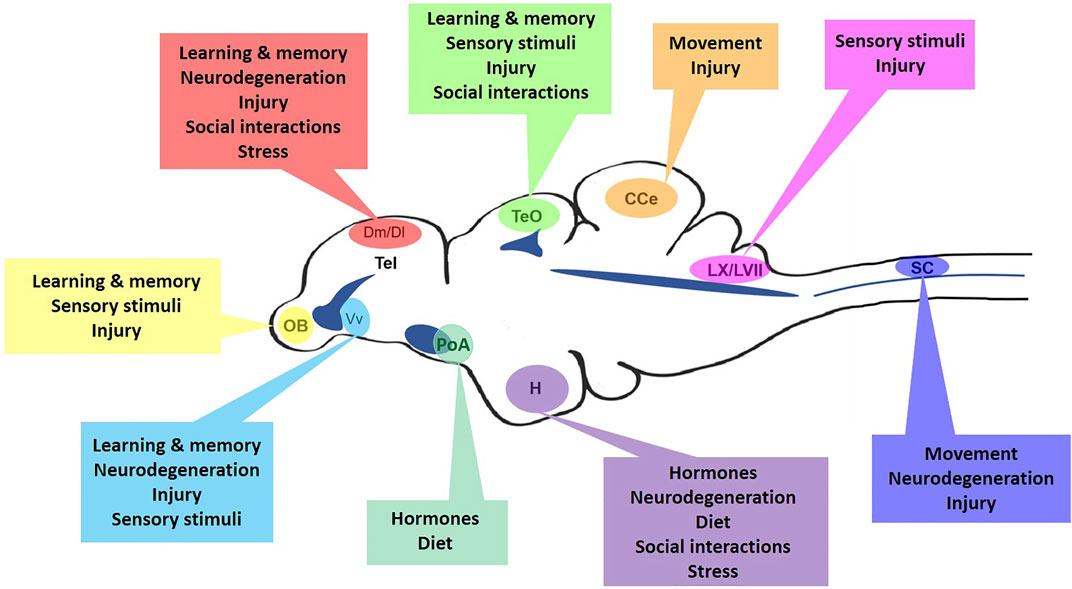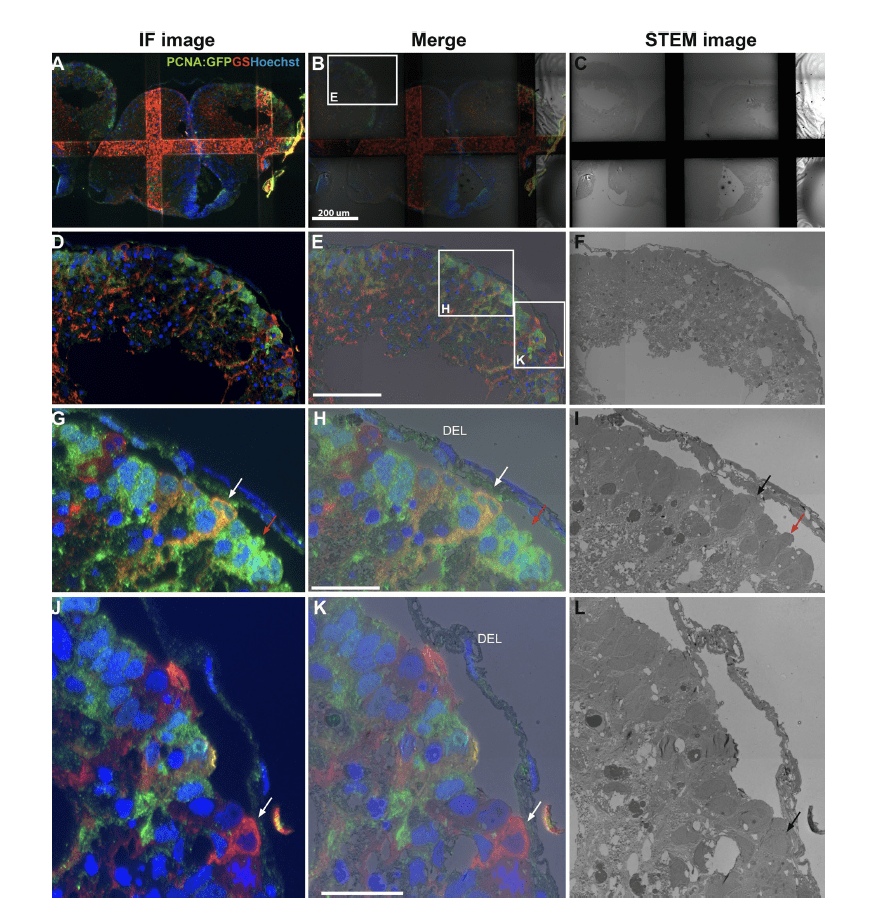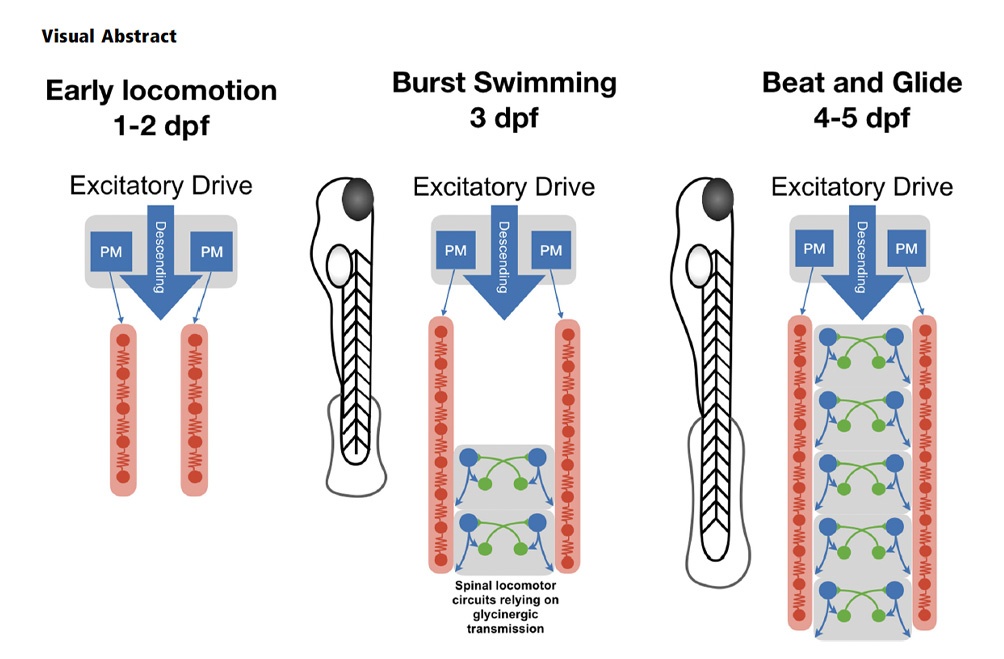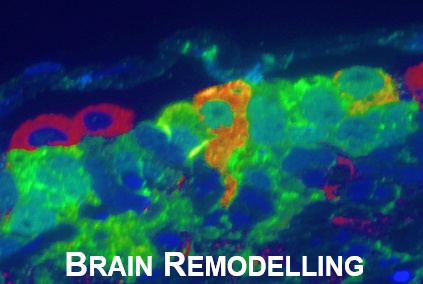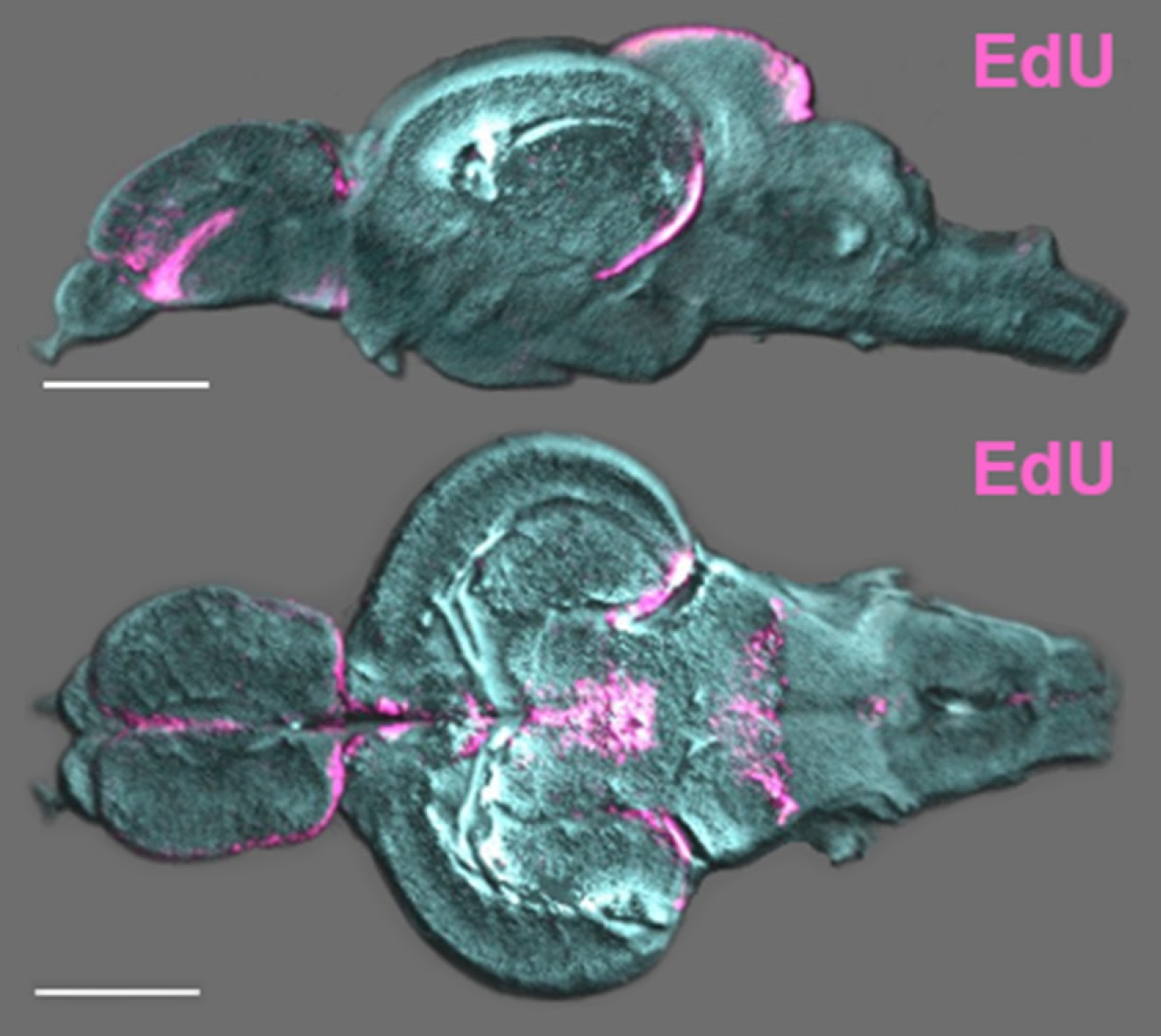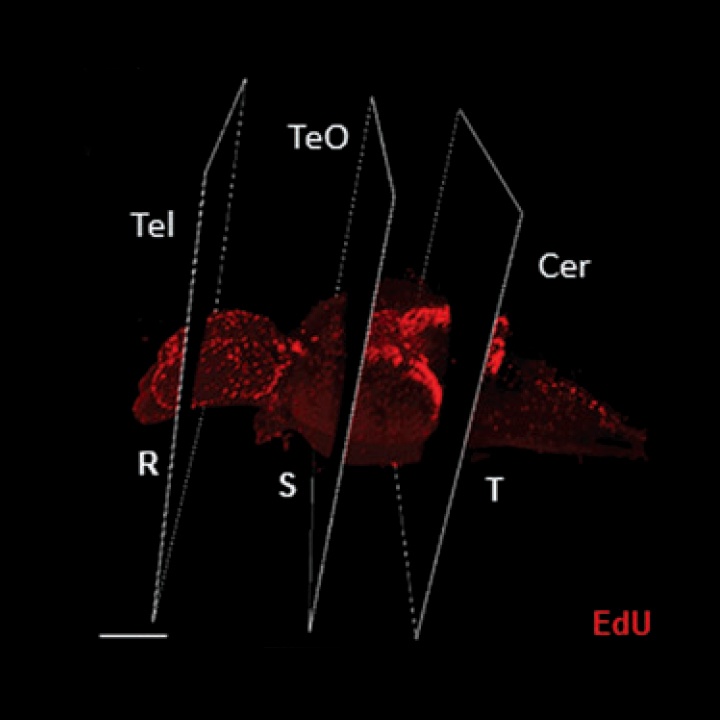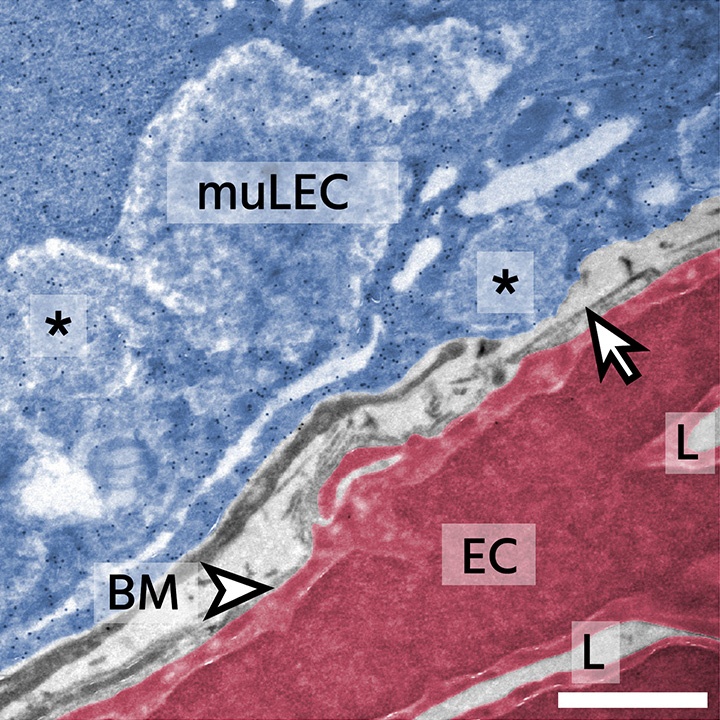How diverse adult stem and progenitor populations regenerate tissue following damage to the brain is poorly understood. In highly regenerative vertebrates, such as zebrafish, radial-glia (RG) and neuroepithelial-like (NE) stem/progenitor cells contribute to neuronal repair after injury.
How diverse adult stem and progenitor populations regenerate tissue following damage to the brain is poorly understood. In highly regenerative vertebrates, such as zebrafish, radial-glia (RG) and neuroepithelial-like (NE) stem/progenitor cells contribute to neuronal repair after injury.
How diverse adult stem and progenitor populations regenerate tissue following damage to the brain is poorly understood. In highly regenerative vertebrates, such as zebrafish, radial-glia (RG) and neuroepithelial-like (NE) stem/progenitor cells contribute to neuronal repair after injury.
How diverse adult stem and progenitor populations regenerate tissue following damage to the brain is poorly understood. In highly regenerative vertebrates, such as zebrafish, radial-glia (RG) and neuroepithelial-like (NE) stem/progenitor cells contribute to neuronal repair after injury.
Dr. Lindsey and Dr. Atukorallaya awarded funding to build the first Zebrafish Facility at the University of Manitoba Bannatyne Health Sciences Campus
Dr. Lindsey shows zebrafish are the way of the future to understand spinal cord development and regeneration in the University of Ottawa’s 2017-2018 Annual Research Report
Once thought to be a structurally stable population of glia and neurons arising primarily during early development, the adult central nervous system (CNS) is now known to maintain the capacity to remodel throughout life.
The field of macro-imaging has grown considerably with the appearance of innovative clearing methods and confocal microscopes with lasers capable of penetrating increasing tissue depths.
The zebrafish has become a popular model in neuroscience to study changes arising in the mature central nervous system (CNS) as a result of social behaviors, neurogenesis, brain injury and disorders, regeneration, neuroimmune interactions, and neurodegenerative diseases.
Mural cells of the vertebrate brain maintain vascular integrity and function, play roles in stroke and are involved in maintenance of neural stem cells. However, the origins, diversity and roles of mural cells remain to be fully understood.



